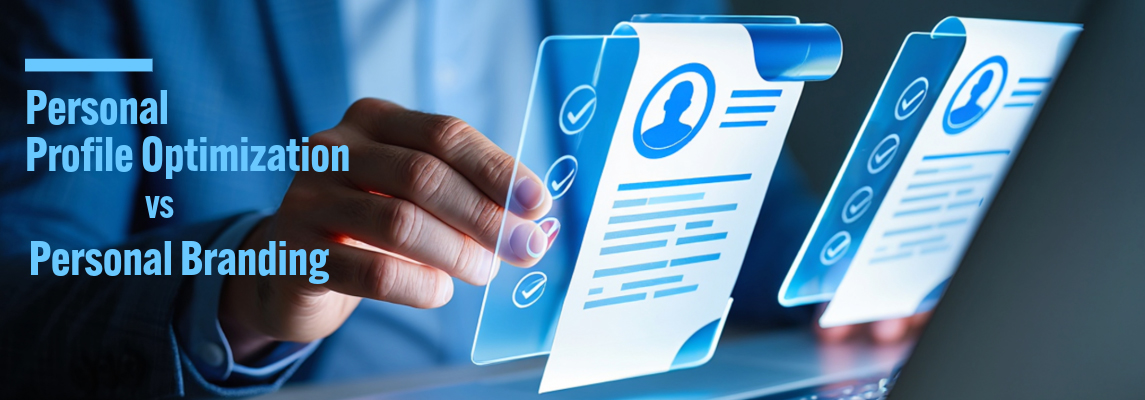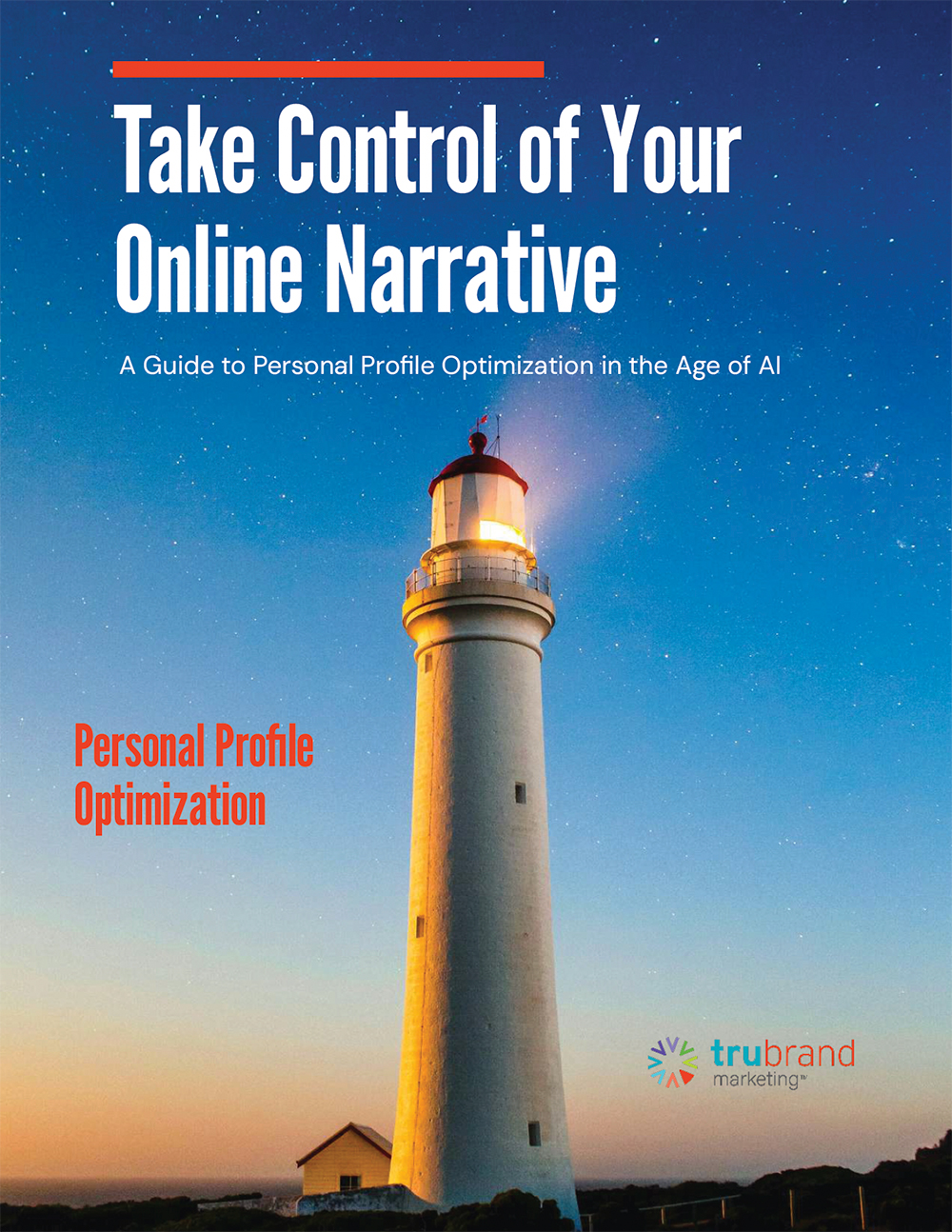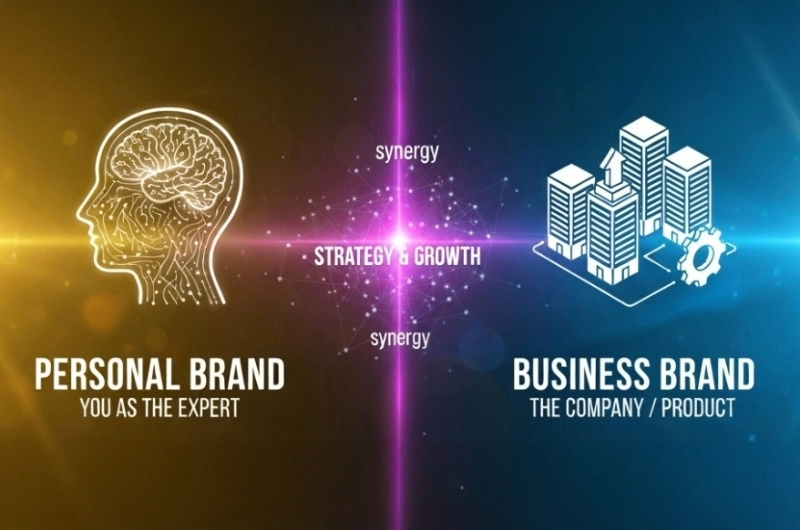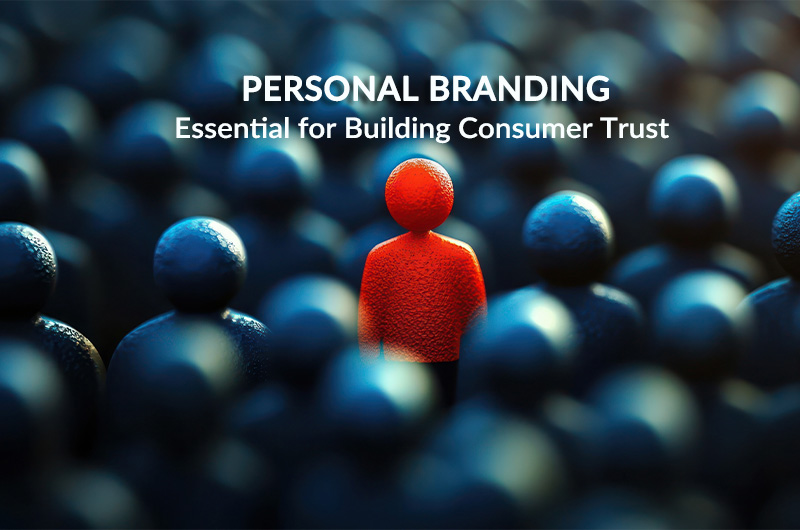Personal Profile Optimization vs. Personal Branding

Why Owning Your Digital Narrative Matters
In a digital-first world, your professional reputation is increasingly shaped before you ever walk into a room or join a Zoom call. Search engines, social platforms, and now AI tools are constantly scanning the internet to pull together a picture of who you are—and they’re writing that story whether you’ve approved the script or not.
This makes two strategies more important than ever: Personal Profile Optimization and Personal Branding. While related, they are not the same—and knowing the difference can protect your reputation, advance your career, and open the right doors.
The Quick Definitions
- Personal Branding is the full, long-term strategy for building your reputation, influence, and identity. It’s the sum of your values, expertise, visuals, content, and voice—shaping how the world perceives you.
- Personal Profile Optimization (PPO) is the targeted process of ensuring every place you appear online—LinkedIn, professional bios, media mentions—is accurate, compelling, AI-optimized, and aligned with your goals.
Think of it this way: Personal Branding is the big picture. Profile Optimization is one powerful part of that picture—but it can stand alone for professionals who aren’t ready for a full brand build.
And in the age of AI, profile optimization isn’t optional. If you don’t proactively shape your profiles, algorithms and AI systems will pull whatever they find—accurate or not—to define you.
A Side-by-Side Look
| Traditional Personal Profile | Personal Profile Optimization | Full Personal Branding |
|---|---|---|
| Basic facts: job title, company, education | Strategically crafted to highlight expertise, purpose, and value | Holistic identity: story, positioning, visuals, messaging, reputation |
| Often outdated or incomplete | Updated, accurate, and visually appealing | Consistent across all platforms and channels |
| No keyword or AI considerations | AI- and SEO-friendly for discoverability | Integrated content strategy and thought leadership presence |
| Passive—only there if someone looks you up | Actively attracts the right people and opportunities | Proactively shapes perception and influence |
| Lacks personality or brand voice | Incorporates tone and language aligned with goals | Fully developed voice, mission, and brand pillars |
The Risks of Leaving Your Story Untouched
If you haven’t touched your online profiles in years—or worse, you’ve never crafted them with intention—you’re handing over your narrative to chance. AI tools like ChatGPT, Google’s AI Overviews, and LinkedIn’s search algorithms compile whatever they find to present you to the world. That could mean:
- Outdated job titles or credentials
- Missing accomplishments that could qualify you for bigger opportunities
- Inconsistent messaging across platforms
- An incomplete or generic image that blends in with everyone else
In today’s competitive market, that’s more than a missed opportunity—it’s a potential career limiter.
When to Choose Profile Optimization
If you’re a professional, business owner, C-suite executive, or entrepreneur and you’re not ready for a full personal brand build, Personal Profile Optimization ensures your first digital impression is your best one.
PPO makes your presence:
- AI-ready — with keywords and structure that ensure you appear in relevant searches
- Aligned — matching your current expertise, goals, and positioning
- Compelling — telling your story in a way that sparks curiosity and connection
- Consistent — so no matter where someone finds you, they see the same high-value professional
When to Build a Full Personal Brand
A full Personal Branding strategy takes optimization further. It’s not just about being found—it’s about being remembered and sought after. That means:
- Defining your why—your purpose and mission
- Building brand pillars that guide your messaging
- Establishing a visual identity across all channels
- Creating original content that reinforces your expertise
- Proactively engaging to influence industry conversations
When you combine this with profile optimization, you control every layer of your online narrative instead of letting AI and search algorithms piece it together for you.
Why Both Matter in the Age of AI
The reality is, AI is now a primary storyteller for your online identity. Recruiters, potential partners, media outlets, and customers often first “meet” you through AI-powered summaries or search snippets. If your profiles aren’t optimized, AI fills the gaps—often with irrelevant, outdated, or incomplete data.
Owning your digital narrative means curating every detail that AI might use to represent you. Profile optimization is the first defense. Personal branding is the long game. Together, they ensure the story the world hears is the one you want told.
Bottom line:
If you don’t shape your online presence, AI will do it for you—and you might not like the results. Start by optimizing your profiles. Then, build the brand that makes you unforgettable.
Schedule a No-Charte
Personal Brand-Building Consultation

Learn How AI is Writing your Online Narrative & How you Can Take Control
Download the Personal Profile Optimization eBook
Your first impression is often made before you enter the room—crafted by search engines, algorithms, and AI-generated summaries. If you’re not actively shaping your digital narrative, it’s being shaped for you—and possibly in a way that’s outdated, incomplete, or misaligned with who you really are.





